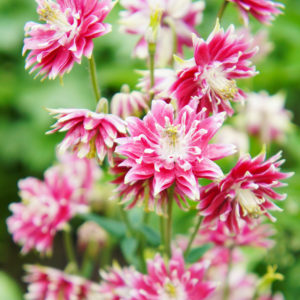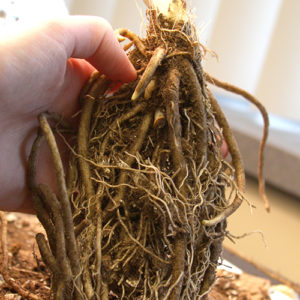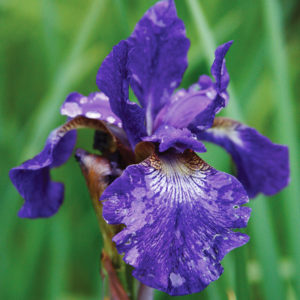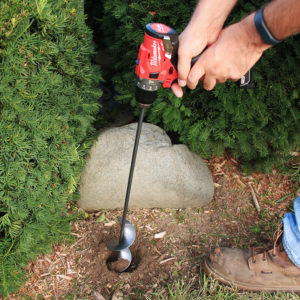Perennial plants are increasing in demand. Gardeners enjoy planting perennials in their gardens because of their long life cycles. Most perennial plants live at least 3 years, with many perennials living for decades. The increase in people planting perennials means people are planting them in different ways. Planting bare root perennials is an increasingly popular way to add these garden staples to your property.
It is possible to grow some perennials from seeds. However, it is not as common as growing annuals with shorter and quicker life cycles from seeds. Buying perennials as started plants at a nursery or garden center is popular for instant impact, however, can be more expensive. Planting perennials from bare root provides quicker results than growing them from seed but is often more budget-friendly. If you are new to growing perennials from bare root read these growing tips to set you up for success.
Tips for Growing Bare Root Perennials
What is a bare root plant?
A bare root plant is the root portion of the plant where the top growth is either dormant (in a woody plant like a tree) or not present in plants like herbaceous perennials. Perennials that go dormant and lose their above-ground growth in winter are considered herbaceous perennials.
When a bare root plant is shipped often it won’t have any above-ground growth showing. However, some plants are eager to grow and will start producing top growth prior to planting.
Storing Bare Root Perennials
When bare-root perennials arrive in the mail they may not be ready to be planted right away. Whether it be unfavorable planting conditions due to weather, or time constraints storing bare root perennials properly prior to planting is critical to their success.
Store roots in a cool, dry, and dark location when storing is necessary for 1-7 days. If storing the roots for several weeks or more is required, additional care will be needed to keep the roots healthy.
For long-term storage of roots make sure the roots do not dry out. Store the packages in the refrigerator to prevent the roots from drying out.
The roots also need air. Therefore, opening the packages can help make sure the roots have plenty of air and do not rot.
Potting the roots in soil is a convenient way to preserve them before planting. The next section goes into more detail on the benefits of potting bare root perennials prior to planting.
Planting Bare Root Perennials
When the proper planting location has been selected and soil has been prepared, it’s time to plant. Different varieties of perennials have different root systems. Some perennials like daylilies, Siberian iris, and hosta have substantial root systems. Perennials like columbine, coneflower, and black-eyed Susan have more dainty and delicate root systems.
All bare root perennials can be planted directly in the ground. However, some types will perform better than others when planted directly in the ground. Perennials with small and delicate root systems will benefit from being started in pots first.
Planting Bare Root Perennials in the Ground
Hosta, daylilies, Siberian iris, bleeding hearts, and peonies all grow well when planted directly in the ground. They have large root systems and grow fast.
Steps for planting bare root perennials in the ground:
- Identify the top part of the plant and the crown of the plant. The crown is where all the roots come together and where growth will come from. The crown should be at ground level or slightly above at planting time.
- Dig a hole using a hand shovel, shovel, or bulb drill. The hole should be 2 times the width of the roots when they are spread out. The depth will vary based on the size of the root system. However, keep in mind the crown should be at or slightly above soil level, this will help determine the planting depth.
- Spread the roots out in the planting hole. Add the soil you removed from the hole back into the planting area to cover the roots. As the roots shift around, you may need to add soil under the roots to make sure the top of the plant is not buried too deep. Fill the hole with soil until it is even with the ground.
- Add water to the planting location. If the soil settles after watering consider adding more soil to the planting location.
- Add mulch to retain moisture.
- Monitor the planting location to make sure the soil is moist but not saturated.
Planting Bare Root Perennials in Pots
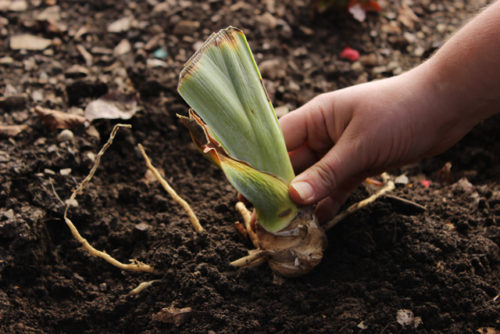
99% of the time that I grow perennials from bare root I plant them in pots first. By planting the roots in pots first I can monitor how much water they are receiving in these critical growth stages. Also, this protects small roots that may not be fully anchored to the ground yet. Typically, bare root plants that are started in pots will be ready to plant in the ground 1-2 months after planting. When transplanting a bare root perennial that was started in a pot, it is the same planting technique you would use when planting a potted plant purchased from a garden center.
Steps for planting bare root perennials in pots:
- Identify the top part of the plant, including the crown of the plant. The crown is where all the roots come together and where the growing point of the plant is.
- Select a pot that is large enough to fit the roots you are planting. Make sure the pot you select has holes for drainage.
- Add soil 1/3 to 1/2 way up the pot. Using a potting mix for containers or a plant starter mix will work best.
- Spread the roots out in the pot and soil. Hold the roots in place while adding more soil. Add soil until it is level with the top of the plant. Leave about a 1″ space between the soil and top of the pot for when you water.
- Add water until it runs through the bottom of the pot. Check the soil daily. If the soil feels dry add water until it runs through the bottom of the pot.
- After a few weeks, top growth should appear. Once top growth appears the plant is close to being ready to be planted in the ground. Lift the plant out of the pot to see if the roots are established. If the root ball falls apart when lifted from the pot it is best to wait a couple more weeks before it is planted in the ground.
Start Growing Bare Root Perennials
When bare root perennials are properly stored and planted they will provide years of beauty to the garden. Knowing the best growing conditions and care for the specific type of bare root perennials is the other key factor for success in growing perennials. Research the soil type, sun exposure, and hardiness zones of bare root perennials prior to purchasing. Plant in locations based on these growing requirements and you should have happy, healthy perennials in your garden. New gardeners should consider adding beginner-friendly perennials to increase their odds of success.


